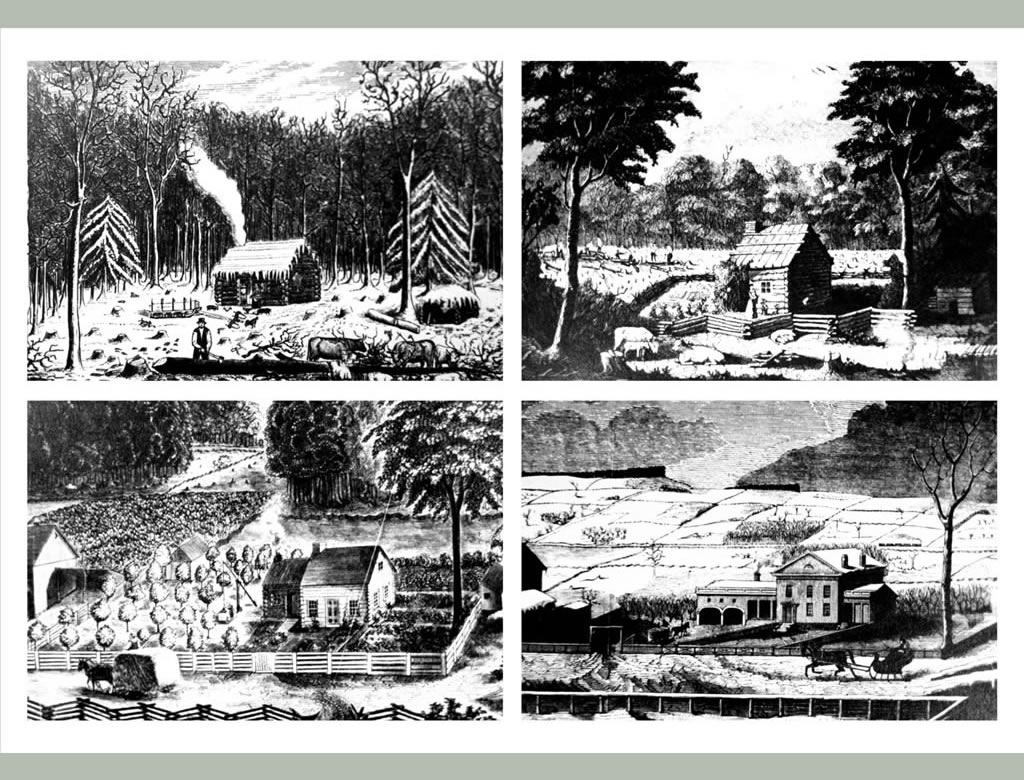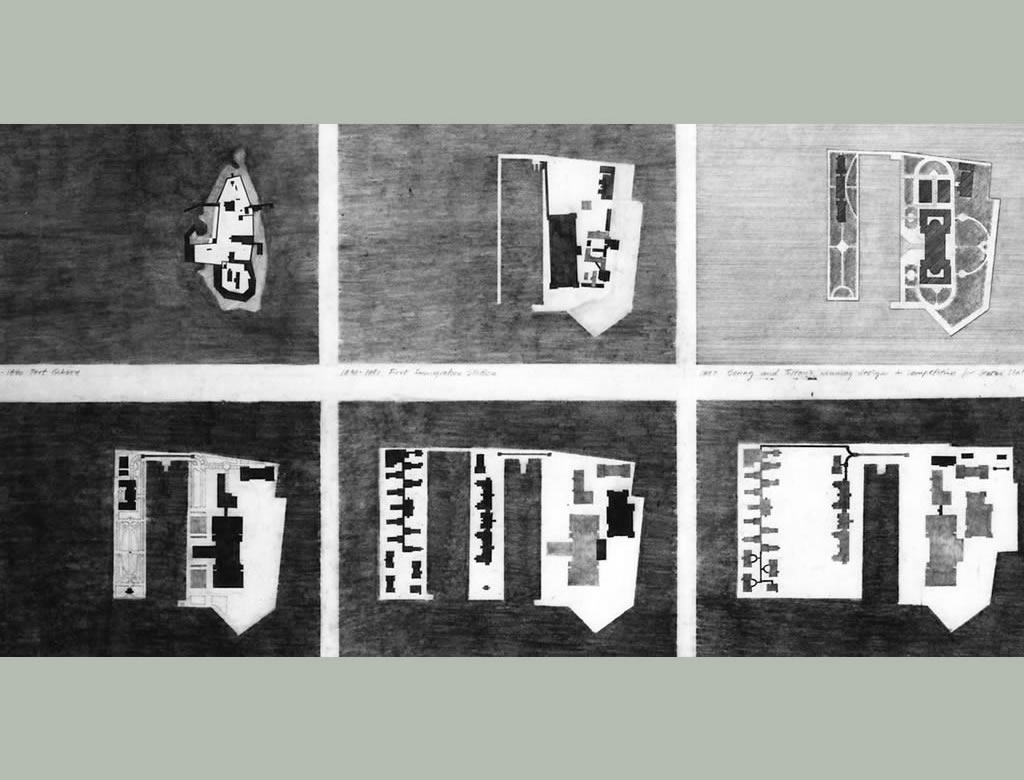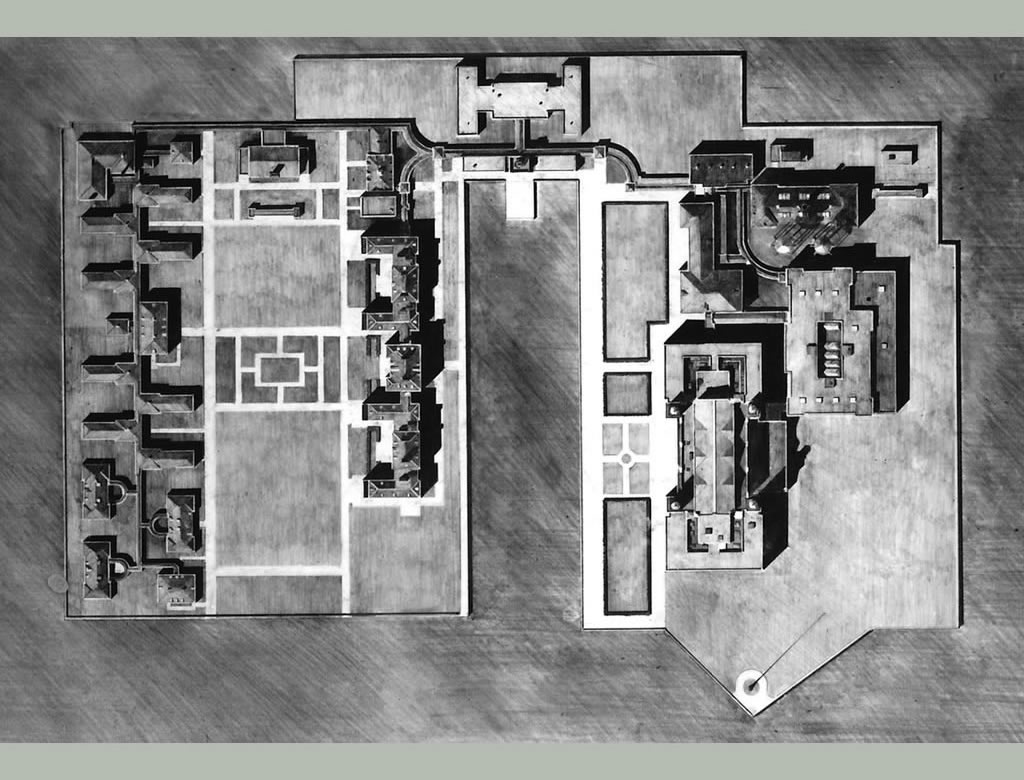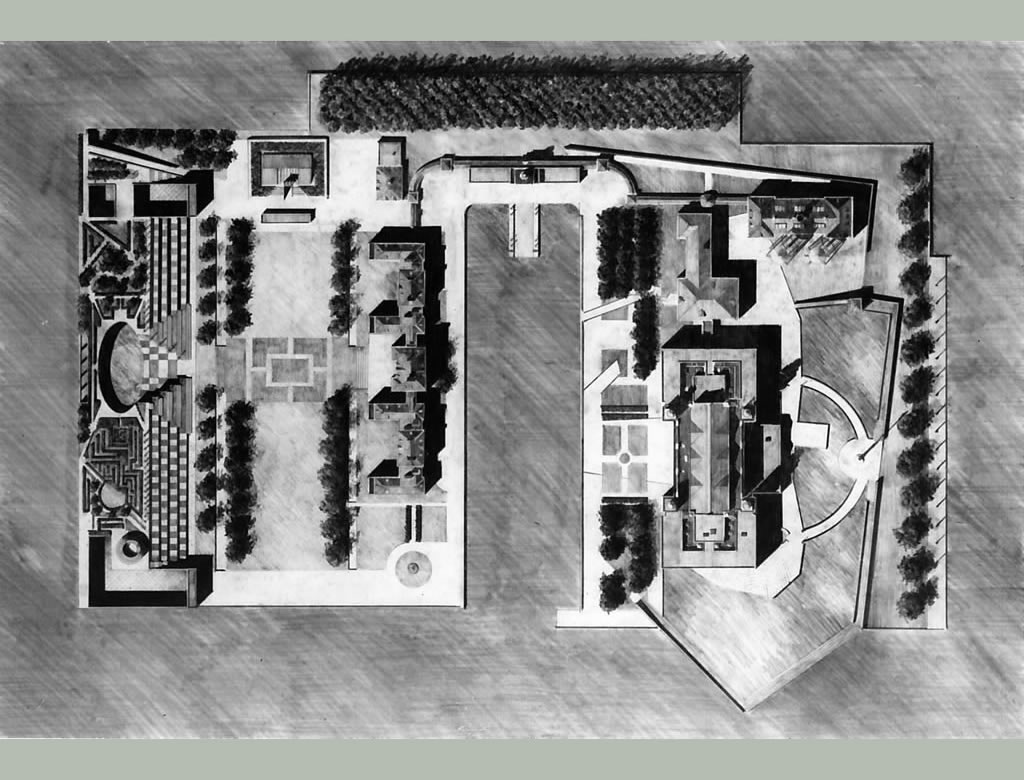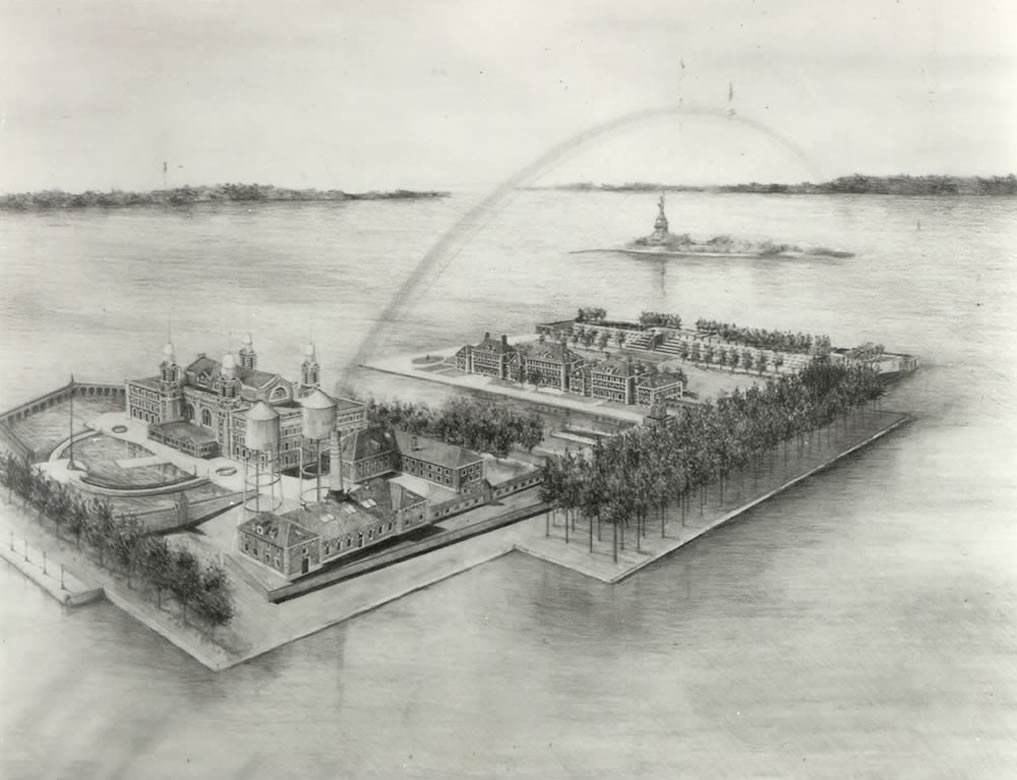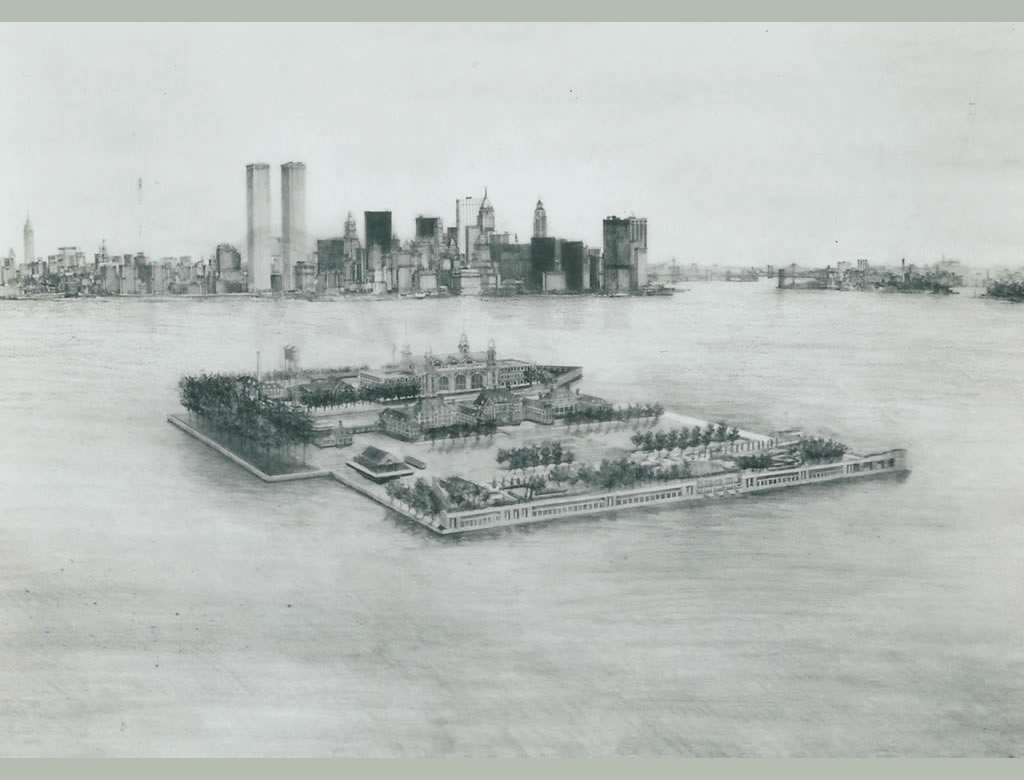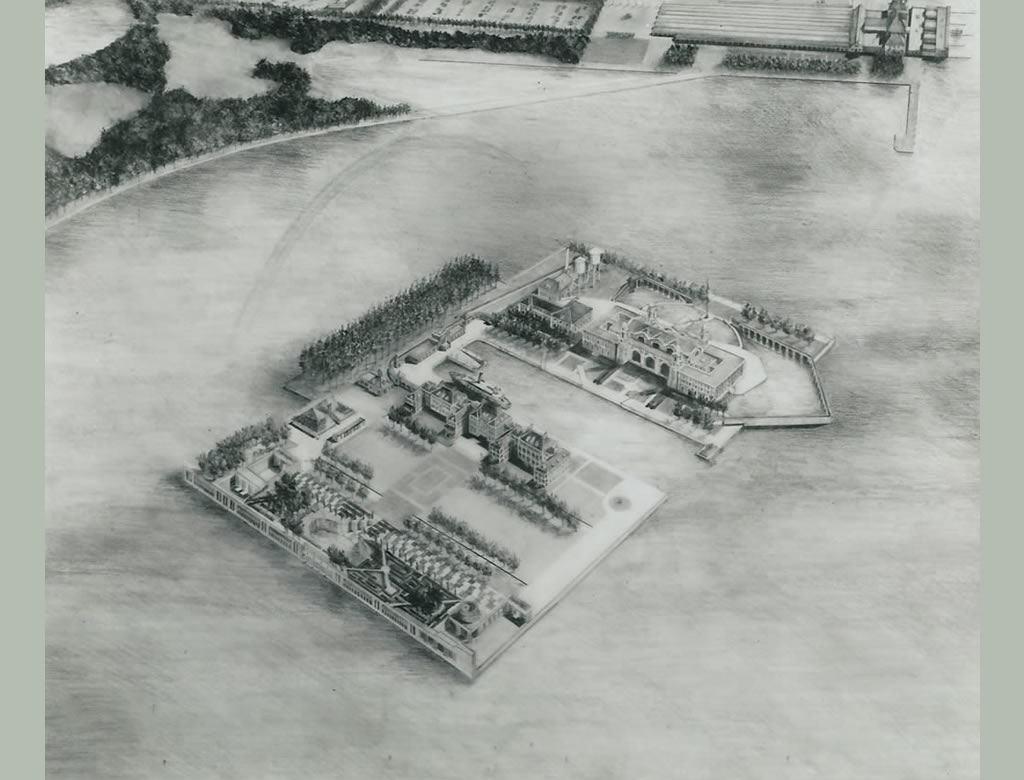Collective memory
Rethinking Ellis Island | 1980
Ellis Island, New York City Harbor
From 1892 to 1954, Ellis Island was the major point of entry for 16 million immigrants to the US, all of them poor, many displaced by political and economic events in their homelands. In 1980, nearly half of the US population had either entered through Ellis island or was descended from those who had, but there was no place in the US to commemorate that experience or the immigrants’ contributions to America’s multicultural society. The island was inaccessible to the public, and the foundations of the Hospital and its isolation pavilions were partially under water. This design proposed to transform the derelict island into a memorial and a place for festivals and other events celebrating the culture of different ethnic and national groups. Its point of departure was recognition of the fracture involved in starting anew in a harsh and sometimes hostile environment; the design is a reflection about the capacity of landscapes to elicit deeply emotional responses recalling experiences of dislocation and journey. One half of the island, containing the historic Immigration Station turned museum, would be a fragmented landscape, made up of the archaeological record of the island’s changing outline throughout its history. The other half would have a large green area flanked by a Center for the Study of Ancestry in the former Hospital and a stepped structure sheltering the ruined pavilions and providing seating to watch events in the central space. This new structure’s southern deck would frame a view of the Statue of Liberty as the immigrants would have first experienced it, while the labyrinth garden on the uppermost level would suggest a metaphorical journey. The forest covering the connection between both sides of the island would be a reminder of the wilderness that was replaced with prosperity though agriculture, as promised in the booklets handed out to prospective illiterate immigrants by the ship companies at the beginning of the 20th century.

